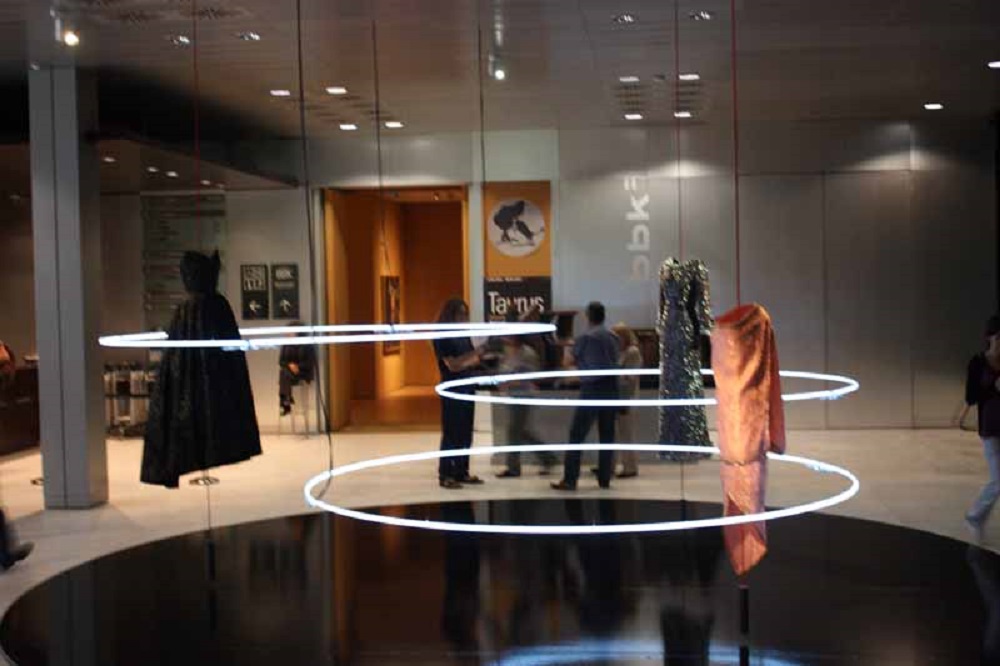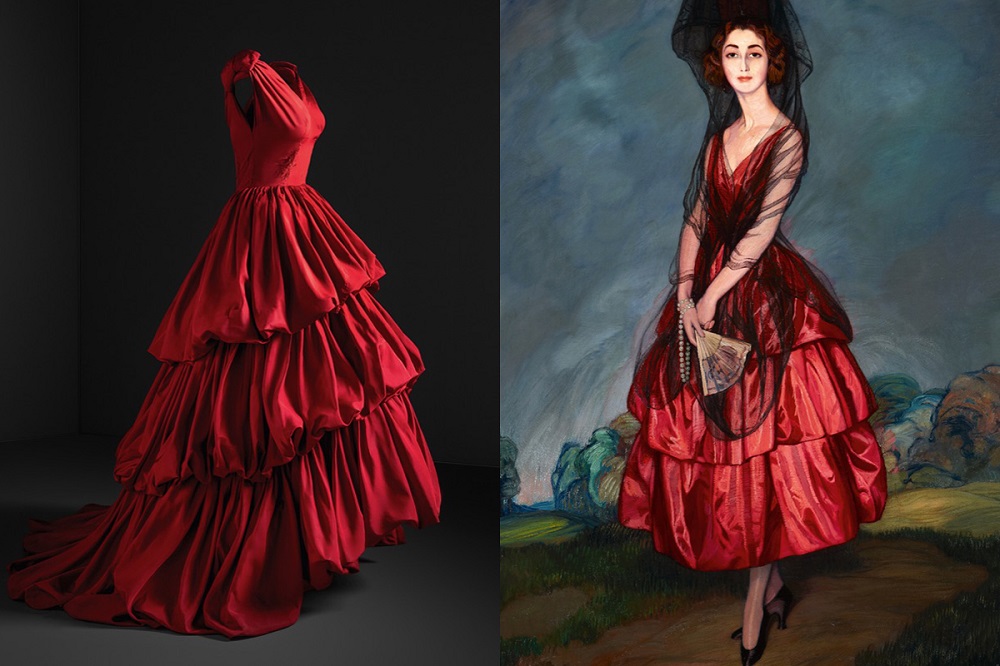Curious to learn more about the Balenciaga brand and how it all started?
Read on.
Where it all started

Cristóbal Balenciaga was born in 1895 to a seamstress mother and a fisherman father, in a small village in Spain known as Guetaria. His father died when he was still a young boy and he was left to grow up with his widowed mother who greatly influenced his love for fine fashion. At the age of just 12, he began his apprenticeship at a tailor in a fashion resort at San Sebastian. Thanks to his precise sewing skill learned from his mother, he was promoted to chief designer pretty fast.
Having had no formal training in fashion but what he learned during his apprenticeship, he opened his first designer boutique in 1919 at San Sebastian, Spain. He then proceeded to open Eisa stores in Madrid and Barcelona named after his mother’s maiden name, Eisaguirre. Sadly he was forced to close the stores due to the Spanish civil war going on at the time. His dream didn’t end there though, he moved to Paris and officially opened the House of Balenciaga in 1937. This was the start of his fashion stardom.
His work was very unique, far from the hourglass designs from Dior. He focused on new volumes and broad shoulders and detailed backs. These were the signature of his carefully designed garments. He was a man shy of the limelight. So much that when his collections were being showcased, he would lock himself in his study preparing his next great piece. His first collection was an instant success. He received so much attention from both the buyers and the press that he was motivated to press forward with his creativity. He greatly influenced the fashion scene in Paris but never at one point forgot his native origin- Spain.
Most of his designs were influenced by his Spanish origin including the famous Bolero lace. Even his red and black contrasts were an inspiration from the Spanish Bullfighters and the Spanish Renaissance.
The start of Balenciaga the brand

Balenciaga the brand took off with a high impact early in the 1950s and all the way to the late 1960s. It was during this period that the designs such as the ballroom hems, cocoon coat, colorless blouse semi-fit lines, and the sack dress of 1957 were all created and showcased. What was notable with most of Balenciaga’s designs was the lack of “waist” which was the trend with other fashion houses at the time. The designs instead focussed on contrast, volume, and asymmetry.
During this period, Balenciaga made a fortune designing dresses for the royals including a wedding dress for the Queen of Belgium, Queen Fabiola, the Duchess of Windsor, Victoria Eugenie the last queen of Spain, Princess Grace of Monaco, Begum Aga Khan, and Barbara Hutton.
His net worth was something that was always in the dark but given the financial muscle of his clients, it is concluded that he was a wealthy man. This is evident from the prime properties that he owned. At the prime of his career and with a hugely successful haute couture business, Christobol retired in 1986. He sadly died on March 24, 1972, in his Javea home in Spain leaving the fashion house dormant.
Timeline of the Cristobal Balenciaga designs
1951 – Created the Vareuse and “Cocoon” line.
1952 – Created the “Parachute” dress.
1953 – Drops the waist in his designs to create waistless silhouettes
1955 – Created the First tunic “I”
1957 – Created the famous “Sac” dress, “Cloche et Paon” line.
1958 – Created the “Baby Doll” dresses and was awarded the Legion of Honor.
1959 – Created Suits with short coats and high waistlines. “Amphore” line.
1961 – Created the evening gowns- duenna’s dresses, a la Zurbaran, and negligees. Also created costumes for the play “Orphée” by Jean Cocteau.
1963 – Created the “Sari” dress.
1965 – Created the “Pétale” dress.
A second chance for the Balenciaga brand

In 1986, the Balenciaga fashion house was acquired by Jacques Bogart S.A who opened a ready-to-wear line, Le Dix. The collection was created by designer Michel Goma. Amid mixed reviews by the press and the buyers, Michel stayed at the fashion house for the next 5 years and was replaced by Josephus Thimister, a famous Dutch designer.
It is believed that the true restoration of the Balenciaga brand started with Josephus. He and Nicolas Ghesquiere who later succeeded him pushed the brand to high-end elite fashion-status. And even though they quite didn’t match the bar set by the founder Cristobal, the success was notable. It wasn’t long before Josephus was replaced by Nicolas Ghesquiere who served as the creative brain for the brand between 1997 and 2012. Nicolas believed in high fashion so much that he worked tirelessly to restore Balenciaga as the original high-fashion house it was back in Cristobal’s days.
Among the artful designs under his name include the gladiator boots, the ‘IT’ bag Lariat, and the “outspoken” floral prints. All these designs helped place the brand back to the top place. It is under his tenure that the brand was acquired by the Kering Group in 2001. The brand has remained under the umbrella of the group to date.
Alexander Wang joined in to take after him between 2012 and 2015. He is said to have brought the American twist into the brand. Just like his predecessor, Wang reinvented his founder’s designs. He brought out modern twists to the bubble skirts and peplums, and cocoon coats. His most outstanding design during his tenure was the yellow coat.
Celebrating the works of Balenciaga

Balenciaga’s work and contribution to the fashion industry were documented and exhibited at the Victoria and Albert Museum in London in 2017, nearly 46 years after his death. The celebration was to honor the creative works of the great fashion icon as well as his contribution to fashion.
The exhibition focused on his haute couture period between the 1950s to 1960s. These two decades marked the highlight of Balenciaga’s career as well as a turning point for contemporary fashion.
The exhibition was curtain raised by a dress with a gazar cloak in green that dates back to 1961. The dress is a symbol of the founder’s great distilled ideas. The celebration was both a regal recognition of his work as well as a farewell from his loyal clients.
The current House of Balenciaga

Balenciaga is currently owned by Kering, formerly known as the PPR. It is currently being headed by artistic director Demna Gvasalia. Demna is a Georgian native who fled his war-torn country to chase his dream in fashion design.
He is the founder of the Viral fashion brand Vetements. His inspiration for his designs come from the Founder’s unique designs and his love for street fashion. He has successfully managed to connect the 1950/1960s Balenciaga’s designs to modern fashion.
Among his fusion designs is the oversized, playful, voluminous yet functional sportswear. He is focused more on attires that are stylish yet practical to wear like the triple S sneakers, puffer coats, kimono-style robes, and the hourglass blazers.
Highly-priced Balenciaga Sneakers
Away from the garments, Balenciaga chose a different direction which has put them on the highest scale in terms of sales. Their sneakers, even though overpriced going for as much as $1000 command high demand and not just for the logo they carry but for the quality. They are made of pure leather, both the insoles, and the interior.
The sneakers have put Balenciaga brand at the center of the sneaker industry rivaling Air Jordan and the likes. And even with the countless imitations of their sneakers they still reap big from them.
Balenciaga also creates bags with their biggest creation being their ‘motorcycle bag’ line that has taken celebrities by the storm. They are not only stylish but beautiful, unique, and extra durable. What makes them stand out is the type of leather they are made of. The leather is super soft, thin, and lightweight yet resistant to tear and wear.
The future of couture in Balenciaga

Earlier this year, it was announced that Balenciaga would be returning to presenting couture collections. This will be more than 50 years since the last couture presentation by the founder. Demna Gvasalia had been wanting to create haute couture designs since he joined the brand and was looking forward to doing it in 2020.
Given the way things are going this year, this may be a long shot for the creative designer but all the same, it’s a goal that will be achieved. The epitaph on Balenciaga’s grave reads, “Women did not have to be perfect or even beautiful to wear his clothes. His clothes made them beautiful”. This is what the founder believed and expressed in all his designs. And as a show of honor to the iconic fashion designer, the current Balenciaga brand carries his legacy through the designs they currently have.
Well, we might say the brand has been lucky to have creative designers who took to heart the founder’s vision and desire. This legacy has been the key reason behind the brand’s success. It has grown immensely that it has garnered celebrity fans all over the world. Just to name a few, Kardashian sisters, Nicole Richie, Sienna Miller, Katie Holmes among others. We hope Balenciaga will be able to stand the test of time in this ever-competitive space to be here for another 100 years.

